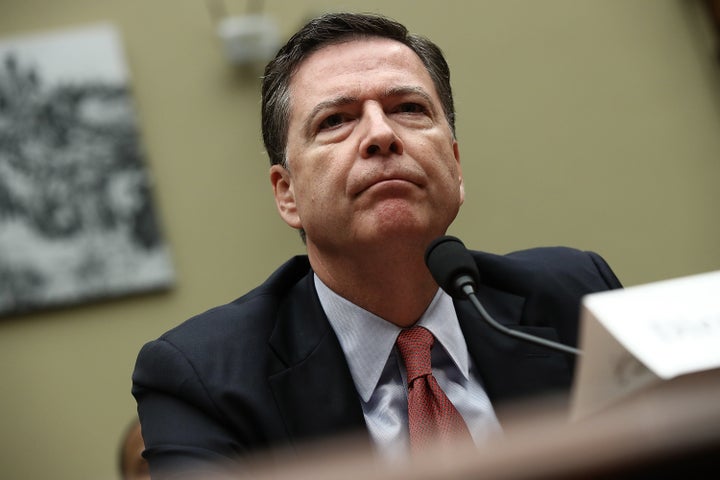
Earlier this week, I wrote about how FBI Director James Comey altered the outcome of the 2016 presidential election with two unprecedented public statements about the Clinton email investigation. An extraordinary article published last weekend in the New York Times reported in depth on what prompted Comey to make those statements, but it didn’t purport to address the underlying “scandal,” if it can be called that.
Time to revisit the Clinton email story that cost her the presidency. Was it really a scandal, or just an over-hyped mess?
One way to frame the issue is to start by understanding what the Clinton email controversy was not about.
We know that as Secretary of State, Clinton received dozens, probably hundreds of highly classified briefings, some of which covered our nation’s most precious operational secrets. We also know that during her tenure she was given access to hundreds, perhaps thousands, of classified documents on highly secure State Department servers.
Nobody, not the FBI or any other government agency, ever accused Secretary Clinton of mishandling any information from any of the classified briefings she received during her term in office, or of removing any classified documents from the State Department’s secure email server.
So the email story cannot be characterized as a broad indictment of Clinton’s approach to classified information. The attack line that she couldn’t be trusted with classified information was always dishonest. In fact, the opposite was true – she had a long history of being trusted with our nation’s most precious secrets, and she had always proven herself to be a trustworthy guardian of those secrets.
The real controversy was about the much narrower issue of the existence of confidential information in emails sent to or from Clinton’s private server. Since the full text of the Clinton emails has never been made public, we are somewhat limited in what we know. But we know enough to form a workable understanding.
For purposes of analysis, the relevant documents can be broken down into three categories.
Category One consisted of formally classified documents. That is, documents that were affirmatively identified and marked as classified by government authorities. The FBI found no such documents among the Clinton emails.
Category Two consisted of 3 documents (out of approximately 30,000) that the FBI found contained, buried somewhere in the text, the designation “c,” purportedly indicating that the information in the marked paragraph was “confidential,” the lowest category of classification. Applicable guidelines required that confidential information included in an otherwise unclassified document be identified not just by burying a “(c)” in the text, but also by announcing the presence of such information in a header or legend on the face of the document. None of the three documents had such an identifier. Two of the three were later found to have been mistakenly marked in the first place.
“The subject was far too complex to be put to bed with a public explanation in a press conference or an interview.”
Category Three consisted of 110 emails that, according to Director Comey, contained “classified information,” although none were marked as classified documents, and none contained any indication or warning that they included classified information. These included emails sent by dozens of government employees.
Secretary Clinton, of course, owed no explanation or apology with respect to Category One documents - actual classified documents marked as such - because there were none.
With respect to the 3 Category Two documents, it is reasonable to argue that Clinton should have noticed and understood the significance of a “c” somewhere in the text of three out of approximately 30,000 documents, even though the documents did not contain the required warning. But this hardly seems to be a momentous issue, given the small number of such documents, the improper marking of the supposedly confidential information, and the low level of confidentiality purportedly indicated by the “c.”
The real action was with the 110 documents in Category Three, those that were not marked in any way but nevertheless were determined by the FBI to contain classified information.
It was fair criticism that the Secretary should have realized that some portion of these documents contained confidential or classified information despite the absence of any markings indicating confidentiality, and that therefore they should not have been sent or received on an unsecured server. But that criticism was hardly unique to Secretary Clinton. It is rampant in government circles.
Those who most loudly criticized Clinton for maintaining a private email server said that she should instead have used the official State Department .gov server. They seemed to have forgotten that it is inappropriate to send classified information on any non-secure server, not just a privately maintained server. That includes non-secure .gov servers. While the optics of maintaining a private server in the basement were obviously terrible, the fact that Clinton used a private server instead of an equally non-secure .gov server, was not highly relevant to the substance of this issue.
“... It certainly appears that Secretary Clinton was uniquely singled out for an unfair level of scrutiny that had never been applied to others.”
Indeed, hindsight tells us that the State Department’s non-secure .gov server, the one that critics said Clinton should have used, proved to be less secure than the server in Clinton’s basement. The FBI found no evidence that the Clinton server was ever successfully hacked. The State Department email system, by contrast, had suffered what was widely recognized as the worst cyber attack intrusion ever against a U.S. federal agency.
If the legitimate issue here was the existence of confidential government information on a non-secure server, then it certainly appears that Secretary Clinton was uniquely singled out for an unfair level of scrutiny that had never been applied to others.
Does anybody really doubt that if the FBI had pored over every single email sent to or from the private email accounts and non-secure .gov accounts of other federal government officials they would have found that a small percentage of the emails contained some information that could be deemed confidential? Or that the same would be true if the FBI had scrutinized every email sent to or from the non-secure private servers used by heads of committees that deal with sensitive information (like for instance Trey Gowdy and Jason Chaffetz)?
So where does that leave us? What more could or should Clinton have done to put this mess behind her?
Arguably nothing. The subject was far too complex to be put to bed with a public explanation in a press conference or an interview. That would inevitably have prolonged, rather than shortened, public focus on the issue. And no matter what she had said, she would have been subjected to never-ending criticism of leaving something out, or being defensive, legalistic, or dishonest.
The national media was never going to allow Clinton to “put this issue behind her.” Every time Russian hackers, WikiLeaks or other Clinton foes dribbled out more emails, the issue was re-litigated by the media, regardless of the mundane content of those emails. And every time, pundits solemnly deplored the “drip, drip, drip,” no matter how innocuous the drips were. No detailed explanation could have stopped this from happening.
Worst of all, Clinton was never going to fully escape the blow-back from FBI Director Comey’s blistering verbal assault on her at a press conference that was supposedly about announcing that the FBI was NOT recommending that criminal charges be brought against her. This unprecedented attack, launched by an FBI Director whose investigation had gone nowhere, was even more inexcusable in light of the Times’ reporting that nobody on Comey’s team disagreed with the decision not to bring charges. They just “did not approve” of Clinton’s conduct.
Well boo-hoo. Since when does the FBI Director get to cast aside the rule book and editorialize based on his personal disapproval? And since when does the FBI Director get to, in the words of the Times article, publicly reproach a presidential candidate in order “to insulate the F.B.I. from Republican criticism that it was too lenient toward a Democrat.”
People close to Comey now want us to believe that this is how the country’s senior law enforcement officer acted non-politically. Spare me.
But despite all of that, every bit of it, Clinton had nevertheless weathered the email mess sufficiently to take a convincing lead in the polls. The issue had faded in importance with the passage of time and the lack of a smoking gun. People were getting tired of hearing about it.
Until, that is, Comey went rogue for the second time, just 11 days before the election, to announce that he had reopened the Clinton investigation, based on nothing more than an unfounded, and shortly thereafter debunked suspicion that his team “might have” found some relevant new documents. Without mentioning, by the way, that he was also conducting a far more serious investigation into whether Trump or his surrogates had colluded with a foreign power to corruptly influence an American presidential election.
And then all hell broke loose. On Clinton. Again.
And a “scandal” about nothing suddenly meant everything.
Philip Rotner is an attorney and an engaged citizen who has spent over 40 years practicing law. His views are his own and do not reflect the views of any organization with which he has been associated. Follow him on Twitter at @PhilipRotner.
